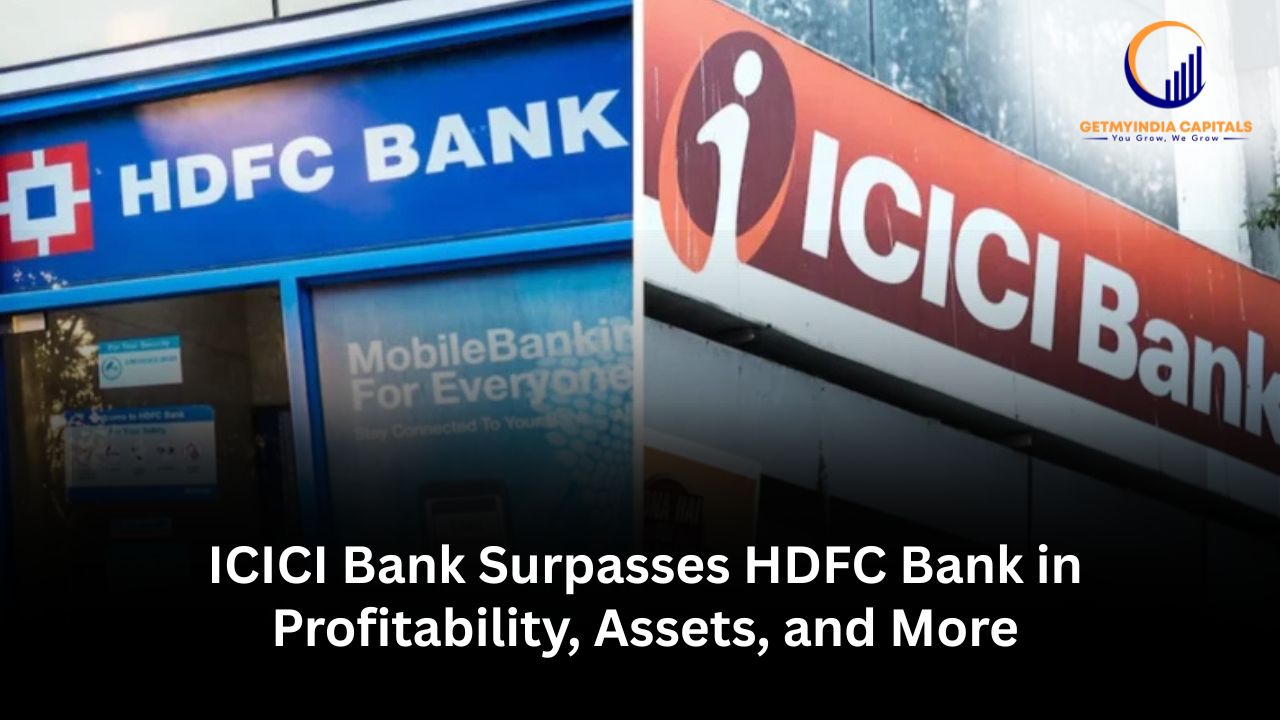Introduction
In a surprising twist in the Indian banking landscape, ICICI Bank has emerged as a stronger performer than HDFC Bank across several critical financial metrics, sparking talks of a power shift in the private banking space. While HDFC Bank recently entered the elite ₹15 lakh crore market capitalization club an achievement in itself investors and analysts are beginning to shift their gaze toward ICICI Bank’s rising dominance.
HDFC Knocked Off the Throne : ICICI Takes the Lead
In a dramatic shift within India’s financial sector, ICICI Bank has emerged as the new frontrunner, overtaking HDFC Bank across nearly every key financial metric in the latest quarterly results.
ICICI Bank reported a 14.6% year-on-year rise in net profit, backed by a robust 19.9% growth in retail loans and a stable net interest margin (NIM) of 4.0%. In contrast, while HDFC Bank’s net profit grew 33.2%, its retail loan growth slowed to just 6.7%, and its NIM has softened to match ICICI’s at 4.0%, down from a consistent 4.4%. One of the biggest game changers has been asset quality. ICICI has slashed its gross non-performing asset (NPA) ratio to 4.13%, showing consistent improvement over 24 quarters. HDFC Bank, traditionally praised for its low NPAs, now finds its lead narrowing with a gross NPA of 1.26%.
The valuation gap between the two has also shrunk to a decade-low, signaling investor confidence in ICICI’s trajectory. Global brokerages like CLSA are now referring to ICICI as the “new growth leader” in Indian banking. This shift marks a pivotal moment. While HDFC Bank still commands a massive customer base and solid fundamentals, ICICI’s aggressive expansion, improving asset quality, and nimble strategy are redefining the pecking order in India’s banking space.
Merger Effect
For HDFC Bank, the merger with HDFC increased the loan portfolio but deposits remained low. This led to the loan-to-deposit ratio (LDR) going above 100% after the merger. However, HDFC Bank brought it down to 96.5% by the end of FY25 but it is still under pressure to increase deposits or reduce loan expansion. In contrast, ICICI Bank’s LDR was 82.4% as of March 2025, which is much better.
HDFC Bank management says increased liquidity in the system will help deposit growth. JM Financial said the pace of decline in LDR will slow down as loan growth picks up and returns to 85-90% of pre-merger levels by FY27. ICICI Bank has also focused on operational efficiency and risk management. Risk-weighted assets (RWA) are 76%, higher than HDFC Bank’s 68%.
ICICI Bank vs HDFC Bank Q4 FY25 Key Metrics
ICICI Bank’s performance in FY25 has stood out in comparison to HDFC Bank. The bank reported a net interest margin (NIM) of 4.3%, higher than HDFC Bank’s 3.5%. HDFC Bank’s NIM returned to its FY23 level of 4.1%, particularly following its merger with HDFC.
ICICI Bank has also outpaced HDFC Bank in terms of return on average assets (RoAA), with a RoAA of 2.4% compared to HDFC Bank’s 1.9%. In addition, ICICI Bank’s total assets saw a 13% growth in FY25, whereas HDFC Bank experienced an 8% increase.
Share Price Performance
As of April 24, 2025, HDFC Bank’s share price stands at ₹1,921.20, showing a slight decrease of ₹2.70 or 0.14% from the previous close of ₹1,923.90. The stock reached a high of ₹1,923.90 and a low of ₹1,905.10 during the trading session.
On the other hand, ICICI Bank’s share price is at ₹1,407.70, down ₹16.70 or 1.17% from its previous close of ₹1,424.40. The stock experienced a high of ₹1,421.20 and a low of ₹1,406.10 during the day’s trading activity.
Conclusion
ICICI Bank’s recent performance marks a significant shift in India’s banking landscape, as it surpasses HDFC Bank in key metrics such as profitability, total assets, and market valuation. This development reflects ICICI’s effective strategic focus on digital innovation, operational efficiency, and asset quality management. While HDFC Bank has long been considered the industry leader, ICICI’s growth momentum suggests a new competitive dynamic in the private banking sector. The shift underscores a broader trend of transformation in Indian banking, driven by technology, customer-centric services, and prudent risk management. If sustained, ICICI Bank’s current trajectory could redefine leadership benchmarks in the sector.
GetMyIndia.com RaysVeda.com GetMyStartup.com LawCanal.com ABHAYRAY.COM ZinCob.com

